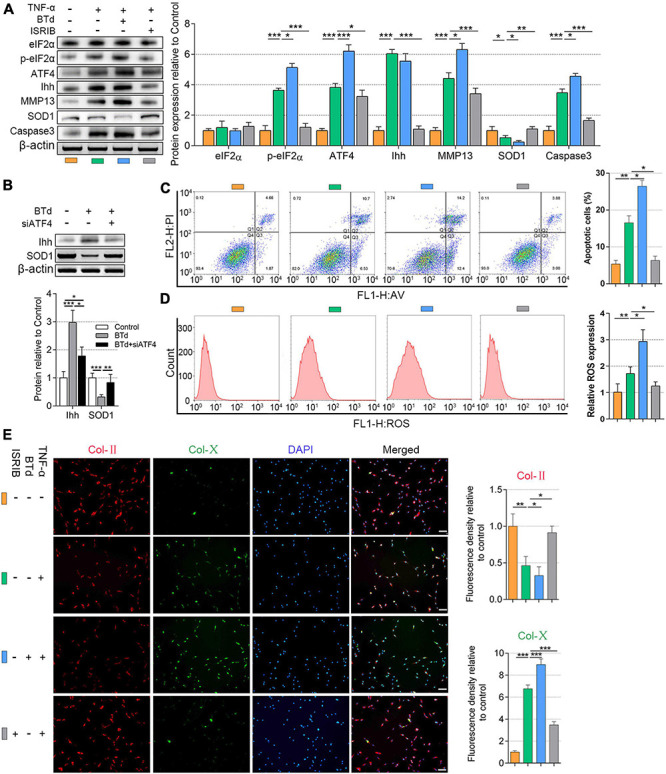FIGURE 4.

Phosphorylation of eIF2α affected ATF4, Ihh expression, oxidative stress, and apoptosis of human NP cells. NP cells were treated with 20 ng/ml of TNF-α for 3 days or simultaneously applied with BTd and ISRIB. (A) eIF2α, p-eIF2α, ATF4, Ihh, MMP13, SOD1, and Caspase3 protein levels were assessed by WB, measured by densitometric analyses, and expressed as folds relative to control. (B) Normal NP cells or ATF4-silenced NP cells were treated with BTd, and the Ihh expression and SOD1 expression were tested by WB. Flow cytometry assay and the corresponding statistical analysis of (C) cell apoptosis (%) and (D) ROS expression. (E) Representative images of IF staining with Col-II and Col-X, measured by densitometric analyses and expressed as folds relative to control (scale bar = 100 μm). Data are presented as means ± SD (n = 7). *p < 0.05; **p < 0.01; ***p < 0.001; the orange column indicates control NP cells without any treatments, the green column indicates NP cells treated with TNF-α, the blue column indicates NP cells treated with TNF-α and BTd, and the gray column indicates NP cells treated with TNF-α and ISRIB. eIF2α, eukaryotic initiation factor-2α; ATF4, activating transcription factor 4; Ihh, Indian hedgehog; NP, nucleus pulposus; TNF, tumor necrosis factor; p-eIF2α, phosphorylated eukaryotic initiation factor-2α; MMP13, matrix metalloproteinase-13; SOD1, superoxide dismutase 1; WB, western blot; ROS, reactive oxygen species; IF, immunofluorescence; Col-II, collagen II; Col-X, collagen X.
